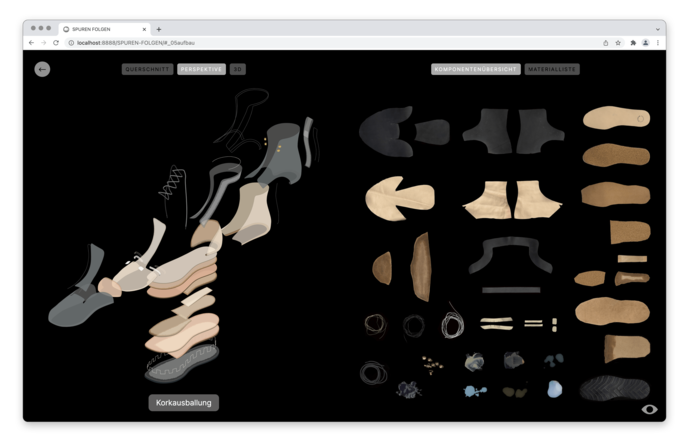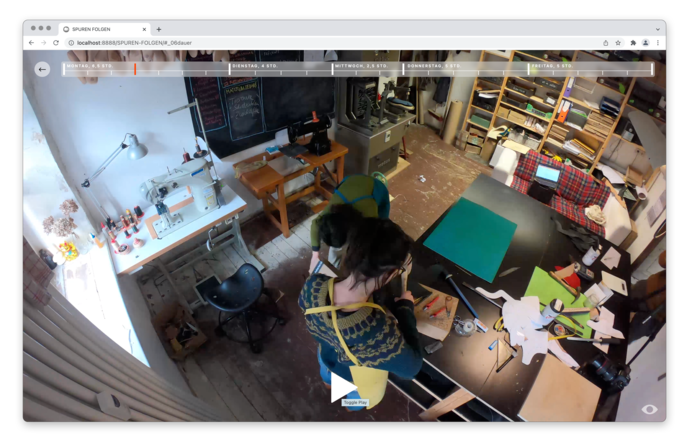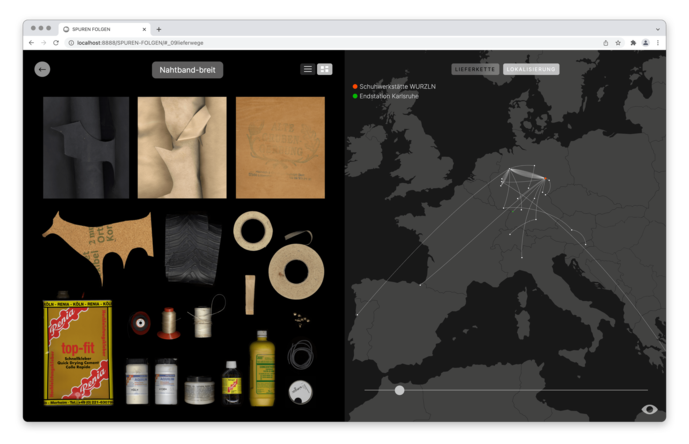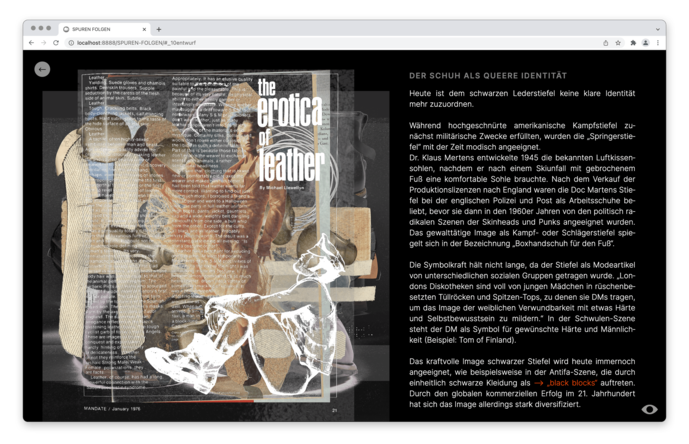

© Severin Geißler


© Severin Geißler


© Severin Geißler


© Severin Geißler


© Severin Geißler


© Severin Geißler
Consuming a product, whether an object, food, or service, is a political act. One's own consumption decision supports a complex system behind a product - a metaproduct - both financially and socially. In search of the traces left by one's own actions, the project SPUREN FOLGEN is born.
In the project, Severin Geißler investigates the phenomenon of product transparency as a field of activity and research for visual communication. How transparent can a product be? How much information can be gathered about an object and which visual strategies are suitable for conveying it? What role does design play in the quest for greater transparency? Can more information be equated with greater transparency?
The project addresses these questions using the example of a shoe, handcrafted in the WURZLN shoe workshop in Halle. The resulting website illuminates the shoe in several chapters from a variety of perspectives, thus attempting to create the most comprehensive digital representation possible and to depict the meta-object "shoe".
As early as the end of the 19th century, the British social philosopher John Ruskin posed the question "What's behind a product?" He tries to draw attention to the alienation of products through increasing industrialization processes and division of labor, thus following Karl Marx's theory of alienation. Today, this question is gaining new importance through the revived environmental discourse.
Digitalization and global supply chains further fragment the value chain, making it opaque and reinforcing alienation. The demand for transparency that underlies Ruskins' question is repeated at the societal and political levels. In order to be able to consume in a climate-friendly and socially responsible way, product transparency is a crucial tool for civil society actors.
Product transparency means the comprehensive communication of product characteristics, especially the visualization of invisible characteristics, such as the entire value chain. Which people are involved in the production and consumption process? Under what conditions do they carry out these processes? When and where do production and consumption take place? What resources such as time, materials, technology and knowledge are required? How does the product affect the human body? What social norms are generated or reproduced by the product? What is the life cycle of the product from raw material extraction to disposal?
Product transparency makes the system behind the product visible and thus enables us to recognize the origins of the commodity and to perceive the value of the product anew. It helps to understand the consequences of one's own actions and ultimately to make a conscious consumption decision.
Thanks to: Arno Schlipf, Alessa Wilhelm und Theresa Theobald, Tibor Weissmahr, Lena Haselmann, Lydia Kähny, Helene Lauppe, Hans-Peter Lutsch, Béla Meiers, Isabel Motz, Leonie Mühlen, Hanna Müller, Troy Nachtigall, Yannick Nuss, Felix Plachtzick, Anna Rakemann, Kathi Rüll, Rebecca Zink
Supervision: Prof. Rebecca Stephany, Prof. James Langdon, further support by Prof. Michael Kryenbühl and Ivan Weiss, Prof. Matthias Bruhn, Prof. Susanne Kriemann, Prof. Füsun Türetken, Prof. Mario Minale, Katharina Wahl